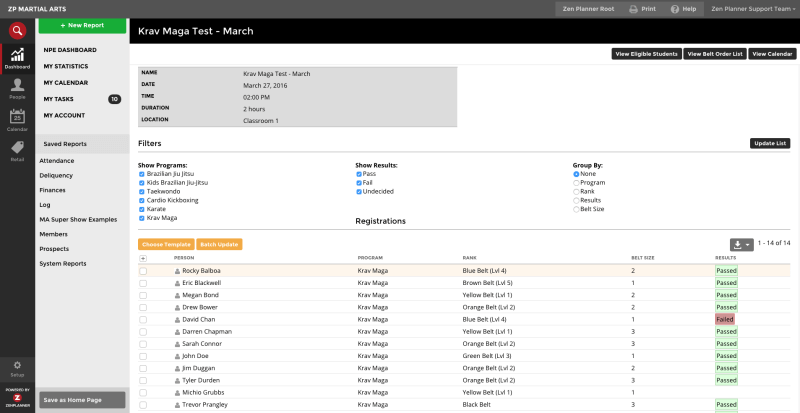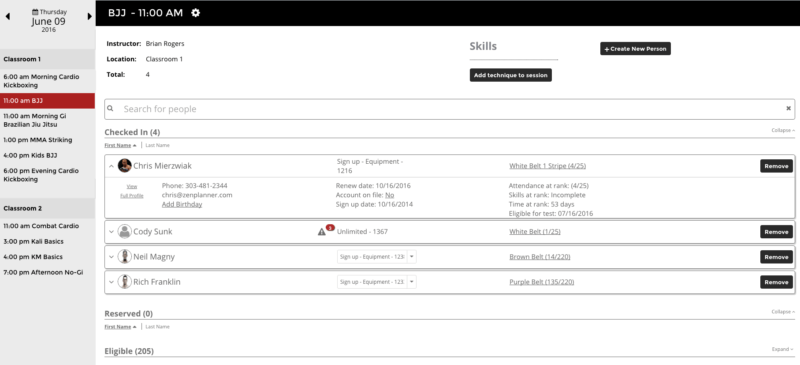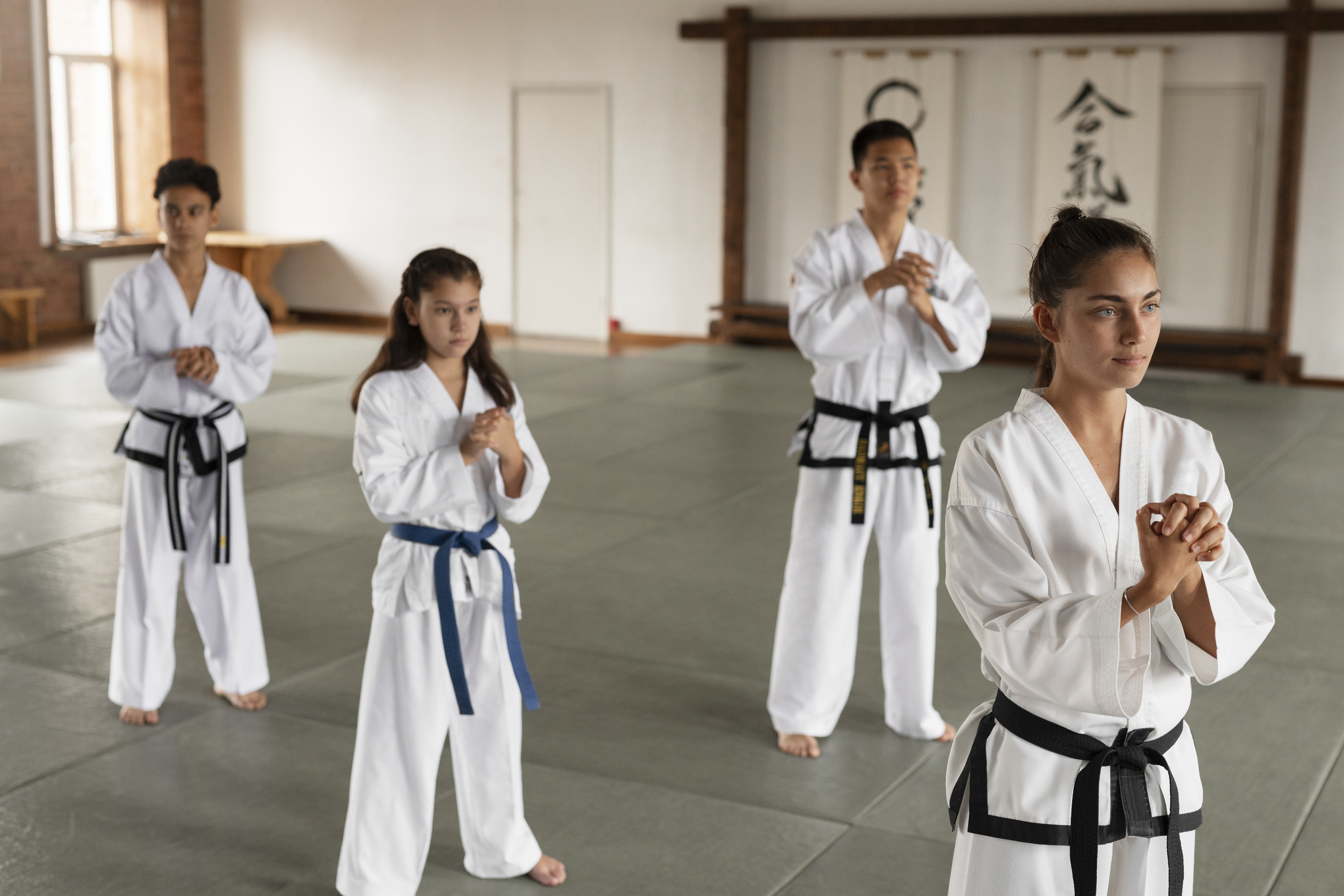Boost Student Engagement with Smart Belt Tracking: A Game-Changer for Martial Arts Schools

The martial arts industry in the U.S. is projected to grow by 3.6% annually from 2023 to 2028. As competition increases, effective student management, including belt tracking, will become even more critical for success.
Source: IBISWorld, Martial Arts Studios in the US – Industry Report (2023)
Tracking student progress and managing belt promotions in martial arts schools is essential, yet often challenging. As schools grow and student numbers increase, keeping a consistent and fair system becomes more complex. Instructors must balance providing individualized attention with managing a school’s day-to-day operations.
How Can Digital Belt Tracking Improve Student Progress in Martial Arts Schools?
As martial arts schools evolve, so do the tools and methods available for tracking student progress. Traditional methods, such as paper records or manual note-taking, can be cumbersome and prone to errors, especially as student numbers grow. Modern technologies offer innovative solutions to these challenges, providing digital platforms that automate and streamline the belt tracking process.
Here are some ways technology is revolutionizing belt tracking:
- Digital Progress Tracking: Software solutions now allow instructors to track student progress digitally, reducing the risk of human error and making it easier to update records in real-time.
- Automated Notifications: Advanced systems can automatically notify instructors when a student is eligible for a belt promotion, or when a student needs more attention, based on their progress and attendance.
- Customized Curriculum Mapping: Some platforms offer the ability to customize tracking based on the unique curriculum of each school, ensuring that the system aligns with the specific requirements and standards of different martial arts disciplines.
- Data-Driven Insights: By integrating belt tracking with attendance and retention data, these tools provide valuable insights into student behavior and school performance, helping instructors make informed decisions to improve both teaching and business operations.

With larger schools, it is harder to maintain the same detailed level of individual attention to monitor each student’s progress. If the school’s curriculum and standardized time at rank are tracked, your martial arts software can notify the instructor to pay closer attention to particular students.

Real-World Success: How Martial Arts Schools Are Thriving with Digital Belt Tracking Systems
- Case Study 1: Small Dojo Transformation: A small martial arts school was struggling to keep up with student promotions as the school grew. By implementing a digital belt tracking system, the dojo owner could easily monitor each student’s progress, set up automated reminders for upcoming promotions, and ensure no student fell behind. This not only improved student satisfaction but also freed up time for the instructor to focus on teaching.
- Case Study 2: Large Academy Efficiency: A larger martial arts academy used to rely on manual records, which led to inconsistencies and missed promotions. After adopting a digital system, the academy standardized its promotion process, significantly reducing errors. Instructors could now see, at a glance, where each student stood in their journey, leading to more timely promotions and happier students.
Zen Planner’s Digital Belt Tracking Capabilities
Zen Planner is at the forefront of this technological evolution, offering comprehensive martial arts management software that includes powerful belt tracking features.
Here’s how Zen Planner can help martial arts schools overcome the challenges discussed earlier:
- Seamless Progress Tracking: Zen Planner’s software allows instructors to easily track student progress toward their next belt, providing a clear and organized view of each student’s journey.
- Automated Alerts: With Zen Planner, you’ll never miss a promotion. The system can send automatic alerts when students reach eligibility, ensuring that deserving students are recognized promptly.
- Customizable Curriculum Support: Zen Planner’s platform is flexible, allowing schools to map their unique curriculum requirements into the system. This ensures that belt tracking aligns perfectly with your school’s specific standards.
- Comprehensive Business Insights: By integrating belt tracking with other critical data, such as attendance and retention rates, Zen Planner provides a holistic view of your school’s performance. These insights help you identify trends, address potential issues early, and make data-driven decisions to improve both student outcomes and business success.
Conclusion
Effective belt tracking is vital for the success of any martial arts school. It ensures that students remain motivated, that communication is clear and consistent, and that administrative tasks are streamlined. Modern solutions, like Zen Planner, offer innovative tools that not only simplify belt tracking but also enhance overall school management. By adopting these digital solutions, martial arts schools can ensure they provide the best possible experience for their students while also driving growth and success for their business.
Ready to take your martial arts school to the next level? Explore Zen Planner’s digital belt tracking and management solutions today and discover how we can help you streamline your operations and keep your students engaged and motivated.
Time-consuming tasks like belt tracking are made simple with comprehensive martial arts management software. Looking for a new software provider? Get your copy of our free checklist, 9 Things Your Martial Arts Software Must Have to help you find the right solution for your school.

I’m Coach Kelli, a devoted CrossFit gym owner with 15 years of experience managing my facility, along with owning yoga studios and wellness centers. Beyond the fitness world, I have a passion for cooking, cherish moments with my children and family, and find joy in spending time outside. Having experienced the highs and lows, I’m dedicated to leveraging my expertise to help you grow and succeed on your fitness journey.

I’m Coach Kelli, a devoted CrossFit gym owner with 15 years of experience managing my facility, along with owning yoga studios and wellness centers. Beyond the fitness world, I have a passion for cooking, cherish moments with my children and family, and find joy in spending time outside. Having experienced the highs and lows, I’m dedicated to leveraging my expertise to help you grow and succeed on your fitness journey.








